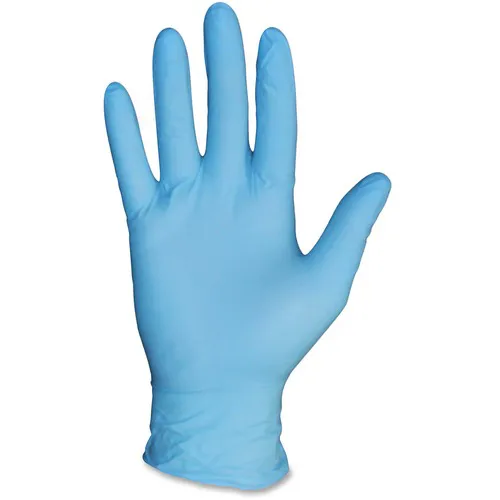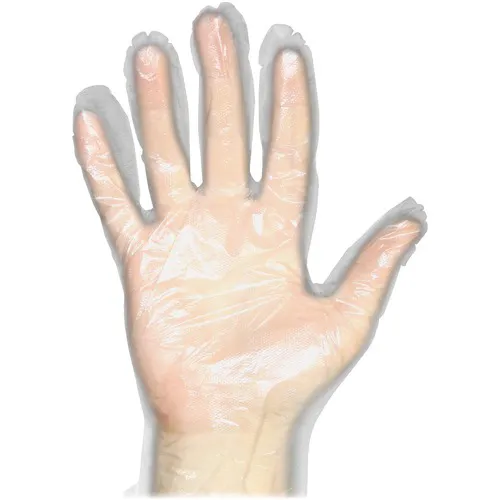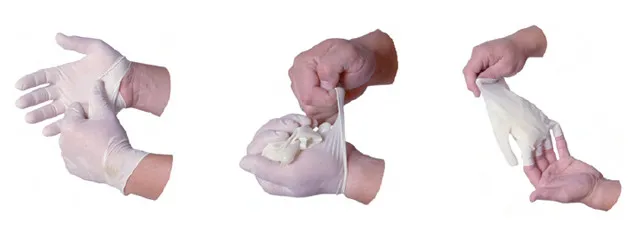
Gloves help keep us safer by eliminating cross contamination and by preventing hand damage, whether we are working in healthcare, food service, industrial settings, or offices. In many cases, their use is regulated either by OSHA or the FDA.
Exam Glove Selections
Proper exam gloves provide more barrier resistance to pathogens than non-exam grade gloves, to help minimize the possibility of contamination. The FDA regulates manufacturing of exam/medical grade gloves and inspects facilities and samples shipments.

Nitrile Gloves
• Synthetic polymer.
• Excellence resistance to chemicals.
• Approximately 3 times the puncture resistance of latex or vinyl.
• Available in blue or black.
• Darker colors hide stains.
Latex Gloves
• Natural rubber. Provides optimal barrier against biological contaminants.
• Best stretch and flexing ability for added comfort and sensitivity.
• Less than 1% of users may experience serious allergic reactions.
• Excellent replacement for nitrile
• Typically white in color.


Vinyl Gloves
• Thin synthetic thermoplastic polymer.
• Less expensive than latex and nitrile.
• Often used in non-medical applications.
• Typically semi-transparent.
Polyethylene Gloves
• Synthetic.
• Least expensive option.
• Typically used in food service applications.
• Usually transparent.


Cleaning Gloves
• Pairs come individually bagged and ready to protect your hands while cleaning
• Resists mild detergents, mild acids, alkalies, animal fats, vegetable oils and germicides
Glove Box Holders
Acrylic glove box holders accommodate most all brands and sizes. Place on a countertop or mount to wall through predrilled holes.

Glove Removal
Proper glove disposal helps ensure that no pathogens from soiled gloves contact hands.
-
With both hands gloved, peel one glove off from top to bottom and hold in the gloved hand
-
With the exposed hand, peel the second glove from the inside, tucking the first glove inside the second
-
Dispose of the entire bundle promptly
-
Remove gloves when they become contaminated, damaged, or before leaving the work area
-
Wash hands thoroughly

What Size Glove?
Fitting of gloves is important
-
• Gloves that are too large may be uncomfortable, hard to use and can be hazardous.
-
• Gloves that are too small may be binding and cause hand fatigue.
| Hand Size | 6.5”-7.0” | 7.0”-8.0” | 8.0”-8.9” | 9.0”-9.9” | 10.0”+ |
| Glove Size | Extra Small | Small | Medium | Large | Extra Large |
